Create with Us: The Plastic Ocean Classroom Experience Guide
Help us bring Capt. Charles’ beloved book, “Plastic Ocean,” to life as we work to create the very first “Plastic Ocean” Classroom Experience Guide. This iconic book takes readers through Capt. Charles’ work in oceanography — from his initial voyage to the North Pacific Gyre in 1997 to his later efforts to educate the world about the plastic pandemic polluting our ocean and waterways. In an effort to memorialize his discoveries, we will assemble a group of passionate educators to create classroom lessons reflective of the 16 chapters within “Plastic Ocean”. This experience guide will be published and incorporated into Wayfinder Society’s curriculum to help guide future students and educators on a deeper exploration of these important teachings.
“Plastic Ocean” consists of 16 chapters – each outlining an important scientific, philosophical, or educational concept related to plastic pollution in our ocean. By the end of the summer, we will have completed 16 chapter-specific classroom lessons. Please see below for further details.
Perks
- Opportunity to work alongside Capt. Charles and Algalita team
- Classroom Q&A with Capt. Charles
- $200 stipend per lesson (2 lesson max)
- Free copy of “Plastic Ocean” with a personalized note from Capt. Charles Moore
- All lessons will be incorporated into the Plastic Ocean Experience Guide published and available to the public via Wayfinder Society for Environmental Education
Expectations
- Complete your lesson contribution by beginning of August 2023
- Max 8-hour time commitment (see below for breakdown)
- Provide personal bio and photo to include in promotional materials
Time Commitment
- Read chosen chapter (full book optional) – 2 hours
- Q&A with author Charles Moore on Zoom – 1 hour
- Solo lesson ideation and creation – 2-3 hours
- Collaborative work with Algalita team – 2 one-hour meetings
Are you a formal educator interested in being a part of this journey?
Sign up to create a lesson inspired by “Plastic Ocean”:
Watch the recording our informational Zoom event:
Book Chapter Summaries

Captain Moore in front of the newly built ORV Alguita. Photo credit: Algalita
Ch. 1 A Plastic Soup
Capt. Moore describes his first encounter with the plastic pollution phenomenon in the subtropical zone of the North Pacific Gyre. He explains how the Oceanographic Research Vessel Alguita, and its name, came to be.

Plastic resin pellets found on a beach. Photo credit: Algalita
Ch. 2 Synthetic Evolution
Moore takes us on a tour through space and time through the world of plastic. He begins with the research labs studying plastics effects on marine ecosystems, visits plastic production factories, and takes us all the way back to the origin stories of the first synthetic polymers.

Algalita’s manta trawl collecting a surface ocean sample. Photo credit: Jeffrey Ernst, Algalita
Ch. 3 Surfing the Learning Curve
After his first experience of the plastic soup, Charles hones in on initial investigations and research. He describes this scientific process as one of curiosity and serendipity.
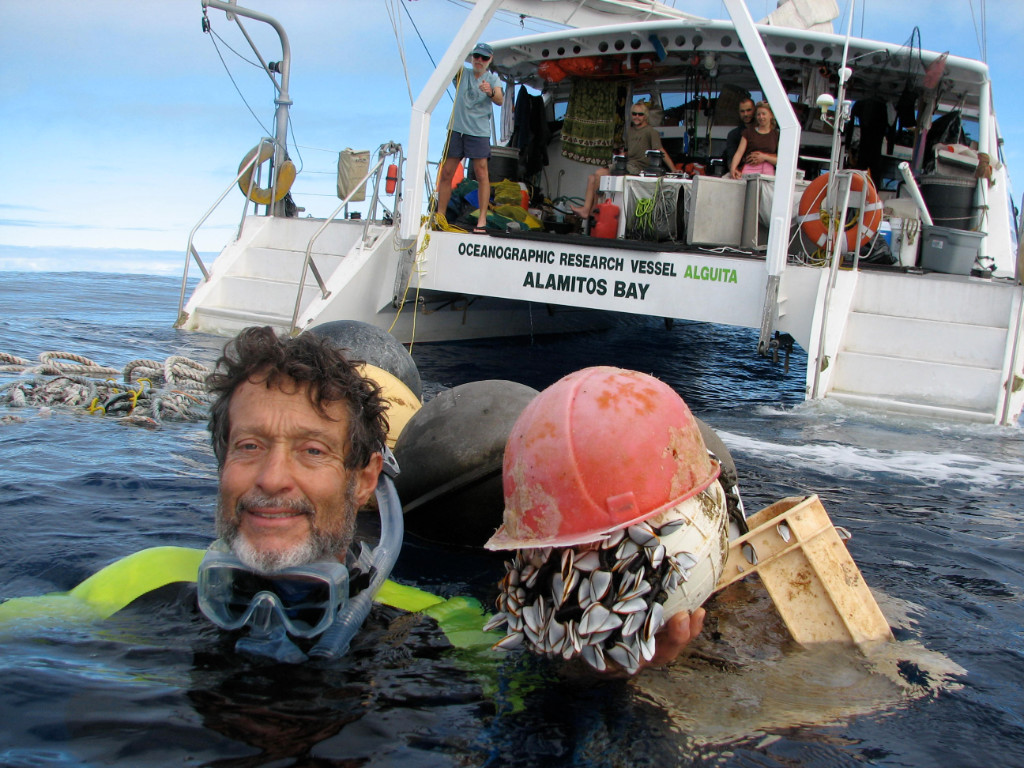
Captain Moore swimming with found ocean plastic debris . Photo credit: Algalita
Ch. 4 Swept Away: The Oceans as Global Dumpster
In this chapter, Moore gets into the details of how and why plastics are accumulating in our oceans. From ships dumping waste on the high seas to litter generated on land, it was a wild free for all with a newfangled material, the harm of which wasn’t considered before Capt. Moore raised the red flag.

Captain Moore and a plastic bottle in the North Pacific. Photo credit: Algalita
Ch. 5 The Plastic Sea Around Us
Charles tells the story of his first expedition to study plastic pollution in the North Pacific Gyre. He shares his questions, thoughts, and investigation process. After the voyage he connects with an oceanographer friend to discuss his findings and try to identify some explanations.

Assorted plastic debris collected from the North Pacific Ocean. Photo credit: Algalita
Ch. 6 The Invention of Throwaway Living
How did we get from the frugal habits of reuse to the excessive use of disposable products? Moore talks us through how this transition occurred through the 1900s with anecdotes from his own childhood.
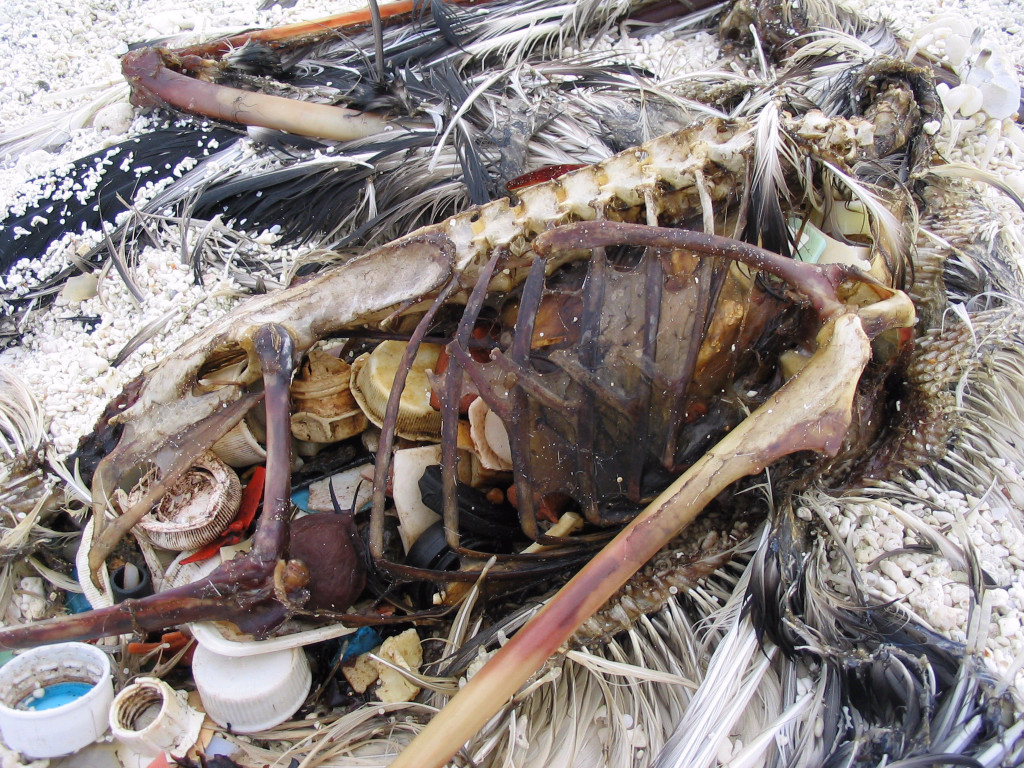
A decayed albatross (seabird) carcass exposing the plastic in its gut. Photo credit: Cynthia Vanderlip, Algalita
Ch. 7 Harm
Charles and his colleagues at Algalita, and some other organizations, begin the process of analyzing the first ocean gyre water samples for plastics. In the beginning, it was still unclear from a scientific perspective whether plastics in the ocean were worth investigating – whether they were something posing a threat.

Captain Moore holds up a jar containing an ocean water sample with microplastics. Photo credit: Matt Cramer, Algalita
Ch. 8 The Plastic Age
Moore teaches us about the many uses of plastics across industries and questions the validity of our reasoning for using so much plastic. He discusses industry arguments for worshiping plastic and challenges industry faces when trying to be sustainable.
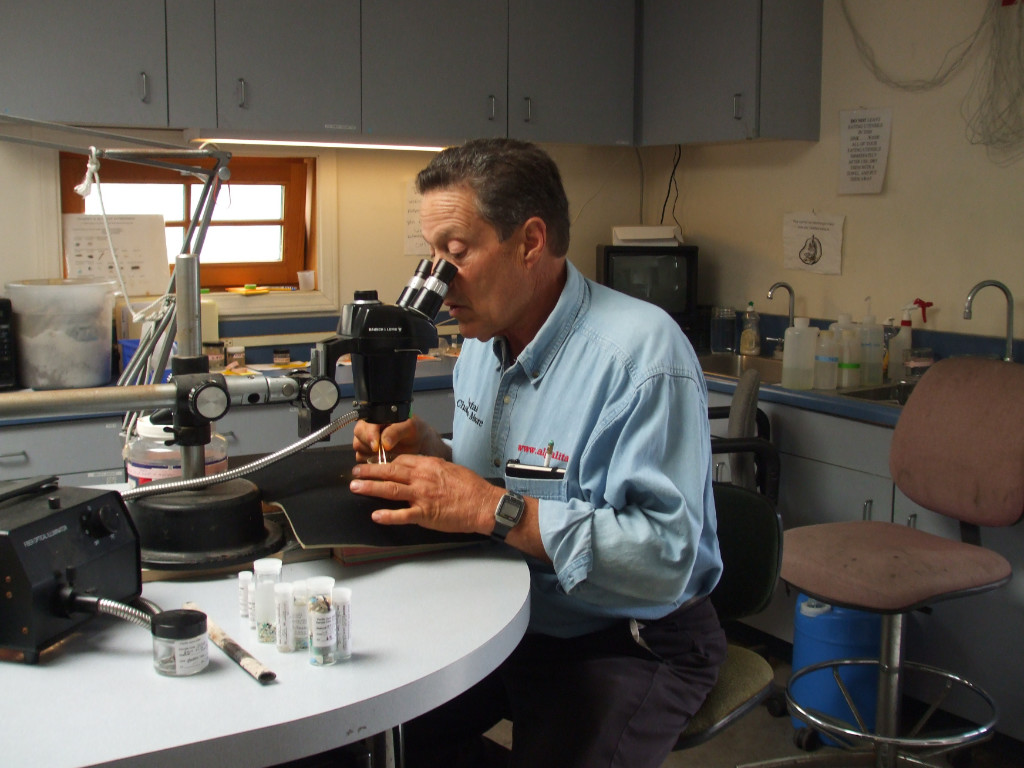
Captain Moore analyzes samples at a microscope. Photo credit: Jeanne Gallagher, Algalita
Ch. 9 Gonzo Science
Charles Moore shares how the international community of scientists studying plastic pollution grew over the late 1990 to early 2000s. Attending several science conferences, Charles kept working to spread the word and advance the study of this newly identified pollutant.
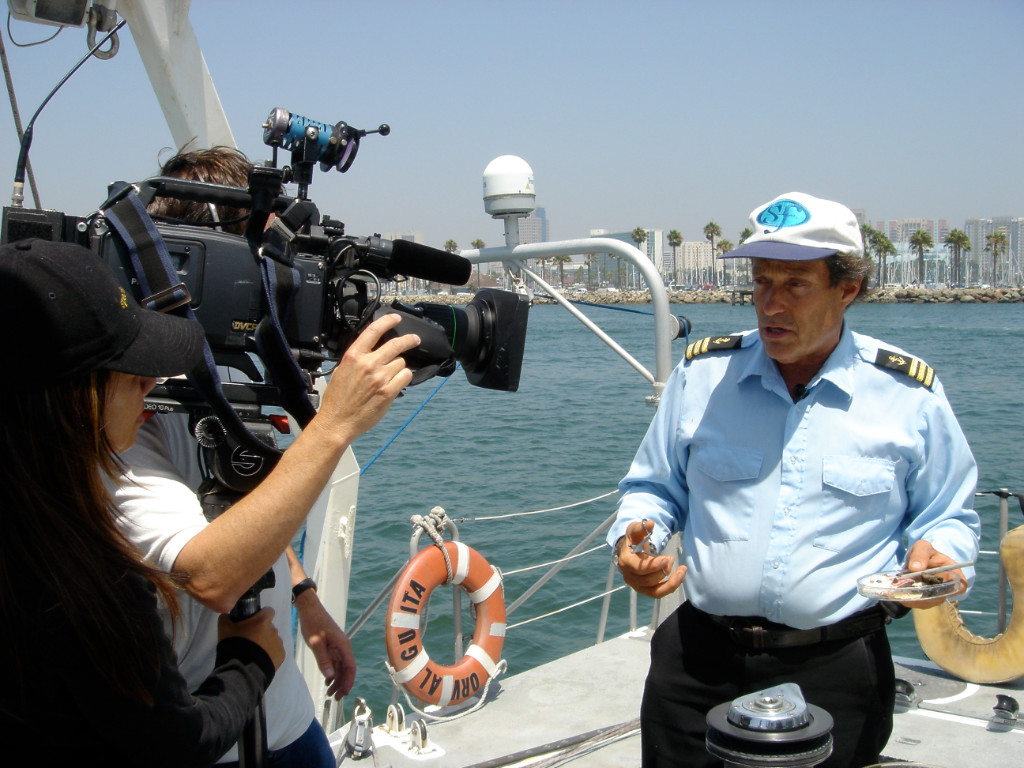
Captain Moore being interviewed by a news agency. Photo credit: Algalita
Ch. 10 The Message Finds Its Medium
The first film about plastic pollution, Synthetic Sea, is produced, providing a straightforward way to raise awareness in a bigger way. Moore also dives into the harms of the chemicals often associated with plastics, a new reason for concern.

Captain Moore stands next to a ghost net hauled from the ocean. Photo credit: Algalita
Ch. 11 Net Losses
The Captain describes his time at the French Frigate Shoals, the largest atoll in the Hawaiian Island archipelago. His discusses how the fishing industries adoption of plastics and contribution to ocean plastics are harming monk seals and other species by entanglement.
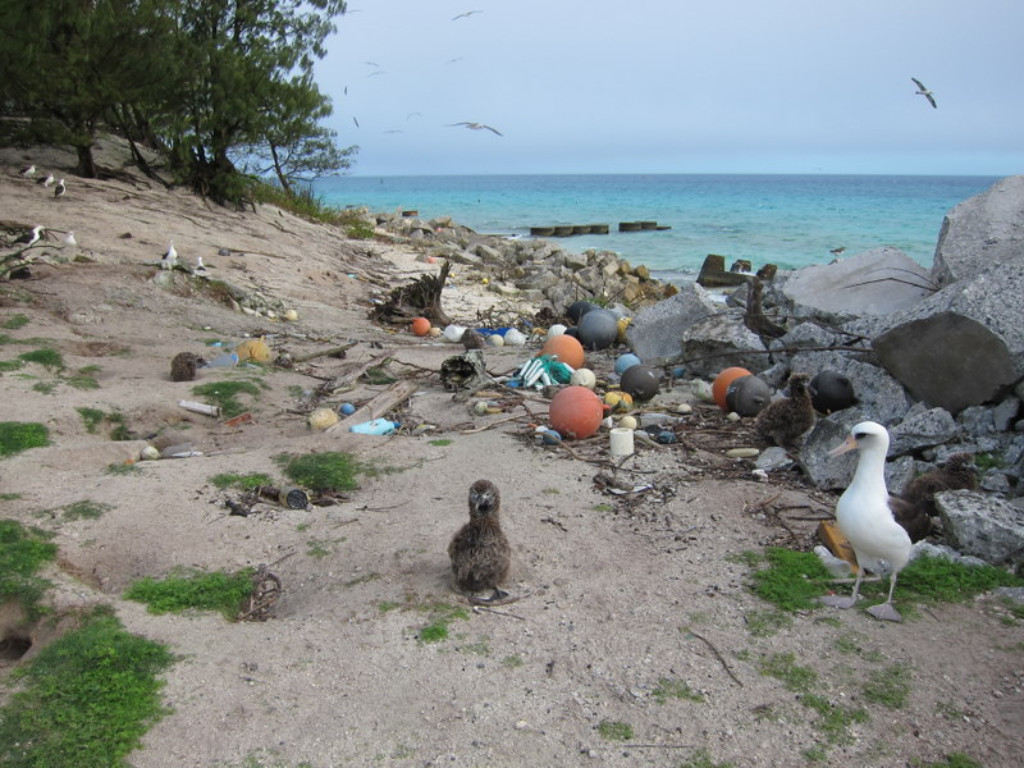
Albatross on Midway Island on a sandy beach littered with plastic waste. Photo credit: Dave Weeshoff
Ch. 12 Indigestible
In this chapter, Moore lays out the earliest studies of plastic being ingested by marine organisms. Plastic is known to be ingested by organisms like lanternfish, seabirds, turtles, pinnipeds, and the list goes on.

Preproduction plastic pellets showing increased yellowing from adsorbed pollutants and oils. Photo credit: Algalita
Ch. 13 Bad Chemistry
Charles tells us about the work of a Japanese scientist studying the pollutants found on plastic pre-production pellets around the world. He explains that plastics are a vehicle for a cocktail of chemicals either added into plastics during production, and other pollutants picked up by plastics in the environment.
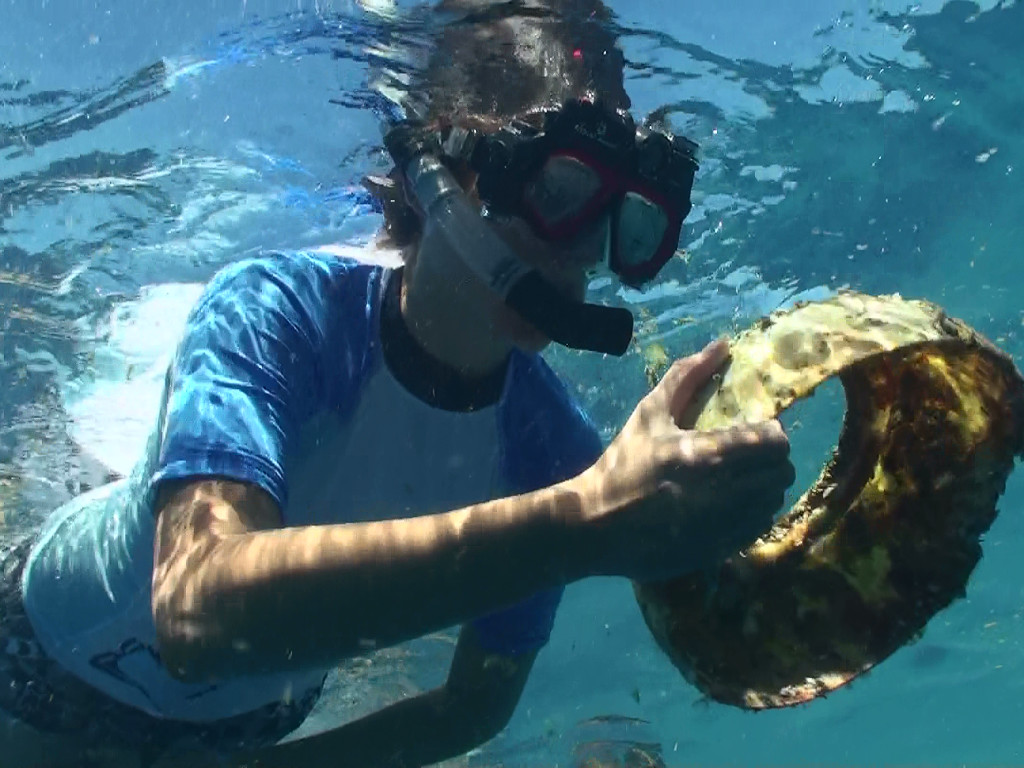
Expedition crew member observes plastic debris underwater. Photo credit: Joel Paschal, Algalita
Ch. 14 Debris Forensics
Moore explains the ways in which you can use plastic debris to infer information about the source of the debris, what it was used for, how it might have ended up in the environment, and how animals might have interacted with it. He also shares how Algalita worked to create the first policy in California regulating plastic pellets.
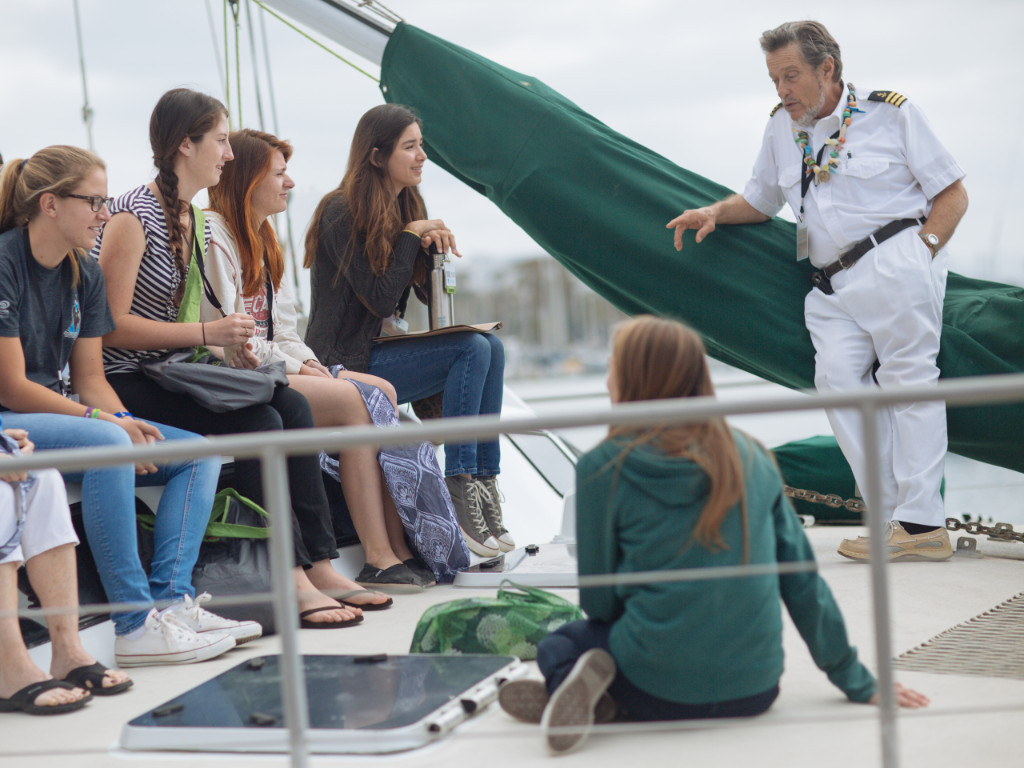
Captain Moore talking to students on the bow of his research vessel. Photo credit: Algalita
Ch. 15 Erasing our Plastic Footprint
Charles analyzes and critiques our existing strategies for managing and reducing the plastic flood. He also introduces up-and-coming ideas for how to reduce our reliance on plastics, bringing in a philosophical discussion about consumption.
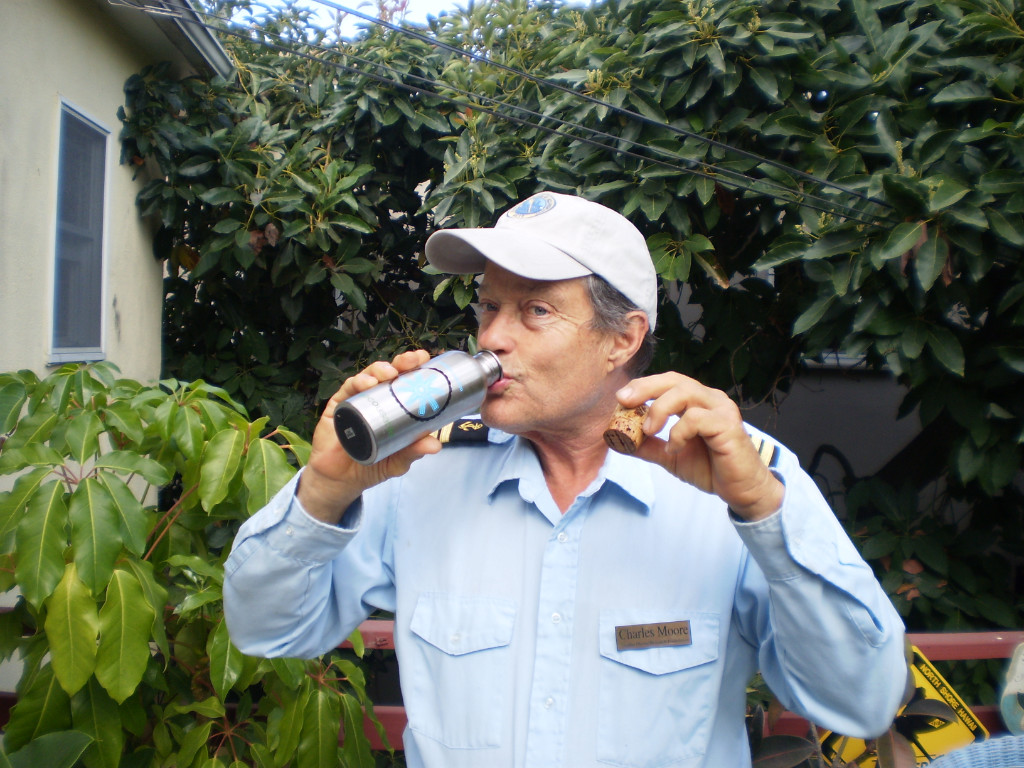
Captain Moore drinking out of a reusable bottle in his fruit and veggie garden. Photo credit: Algalita
Ch. 16 Refuse
Capt. Moore reflects on the deeper realizations of his decades-long (but continuing) journey of discovery of the ocean’s plastic problem. He shares that he believes we need to reconsider our human population’s trajectory of constant growth, production, and consumption.
Sign up to co-create a lesson with us:
What is Wayfinder Society for Environmental Education?
Wayfinder Society is for environmental educators who believe in the power of collective action. It is an online platform hosting a robust offering of classroom and teaching resources that makes it easy for educators to create a fun, dynamic, and engaging classroom and to inspire their students through environmental awareness and action.
